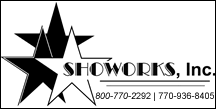
LAN (local area network) A combination of at least two computers and peripherals on a common wiring scheme, which allows two-way communication of data and shared resources between any devices on the network. Laplace, Marquis Pierre Simon de (1749-1827) French mathematician and astronomer who formulated the theory of probability. laser (light amplification by stimulated emission of radiation) A device which generates coherent, monochromatic light waves. All optical drives (CD/DVD recorders and players) contain one or more semiconductor lasers. LCD (liquid crystal display) A display made of material whose reflectance or transmittance changes when an electric field is applied. An LCD requires ambient light or back-lighting for viewing. LEC (Local Exchange Carrier) The local phone company, provider of local telecommunications services and access to long distance networks. LED (light emitting diode) A semiconductor diode that converts electrical current to light, used to display numerical or graphical information. Used in simple one color displays such as calculators and clocks as well as full color, high brightness, video displays used for outdoor signage (popular in Los Vegas and Times Square) a ballpark info-displays. leveler A dynamic processor that maintains (or "levels") the amount of one audio signal based upon the level of a second audio signal. Normally, the second signal is from an ambient noise sensing microphone. For example, a restaurant is a typical application where it is desired to maintain paging and background music a specified loudness above the ambient noise. The leveler monitors the background noise, dynamically increasing and decreasing the main audio signal as necessary to maintain a constant loudness differential between the two. Also called SPL controller. lift/dip Popular European term meaning boost/cut. limiter A compressor with a fixed ratio of 10:1 or greater. The dynamic action effectively prevents the audio signal from becoming any larger than the threshold setting. For example, if the threshold is set for, say, +16 dBu and the input signal increases by 10 dB to +26 dB, the output only increases by 1 dB to +17 dBu, essentially remaining constant. Used primarily for preventing equipment, media, and transmitter overloads. linear PCM A pulse code modulation system in which the signal is converted directly to a PCM word without companding, or other processing. linear phase response See: group delay Linkwitz-Riley crossover The de facto standard for professional audio active crossovers is the 4th-order (24 dB/octave slopes) Linkwitz-Riley (LR-4) design. Consisting of cascaded 2nd-order Butterworth low-pass filters, the LR-4 represents a vast improvement over the previous 3rd-order (18 dB/octave) Butterworth standard. Named after S. Linkwitz, a Hewlett-Packard engineer, who first described the problems and solution in his paper "Active Crossover Networks for Non-coincident Drivers," J. Audio Eng. Soc., vol. 24, Jan/Feb 1976, pp. 2-8. In this paper, he credited his co-worker Russ Riley for the idea that cascaded Butterworth filters met all his crossover requirements. Their effort became known as the Linkwitz-Riley alignment. Linkwitz showed that a significant weakness of the Butterworth design was the behavior of the combined acoustic lobe along the vertical axis. An acoustic lobe results when both drivers operate together reproducing the crossover frequency band, and in the Butterworth case it exhibits severe peaking and is not on-axis (it tilts toward the lagging driver). Linkwitz showed that this results from the Butterworth outputs not being in-phase. Riley demonstrated an elegant solution by cascading two 2nd-order (any even-ordered pair works) Butterworth filters, which produced outputs that were always in-phase and summed to a constant-voltage response. Thus was created a better crossover. lossy See: digital audio data compression Local Loop The communications lines between the long distance subscriber and the LEC Switching center. Loopback A diagnostic test where a digital signal is transmitter over a duplex communications link or network and then returned to the sending device for analysis. Usually involves a testing device installed a the remote end to relay the test signal back to the testing device. low-pass filter A filter having a passband extending from DC (zero Hz) to some finite cutoff frequency (not infinite). A filter with a characteristic that allows all frequencies below a specified rolloff frequency to pass and attenuate all frequencies above. LSB (least significant bit) The bit within a digital word that represents the smallest possible coded value; hence, the LSB is a measure of precision. Lumen A measurement of the amount of visible light energy that comes from a light source. luminance That part of the video signal which carries information on how bright each pixel in the TV signal is to be. The luminance signal can represent any brightness level between black and white. Luminance is often abbreviated as "Y".
|
